ECONOMY
Three charts that show the extent of SA’s economic meltdown
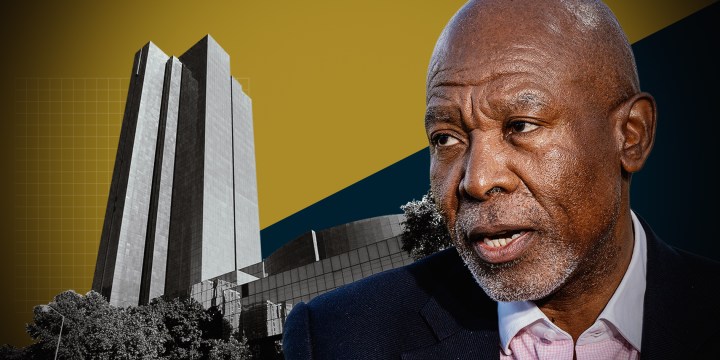
The charts, which illustrate the volume of goods transported by rail and total cargo handled by SA ports, the cumulative power cuts and investments, paint a woeful picture of the country’s economy.
The presentation that accompanied the most recent biannual Monetary Policy Review of the South African Reserve Bank featured three charts that starkly illustrate South Africa’s economic meltdown.
The first shows the volume of goods transported by rail and total cargo handled by South African ports from 2010 to 2024.
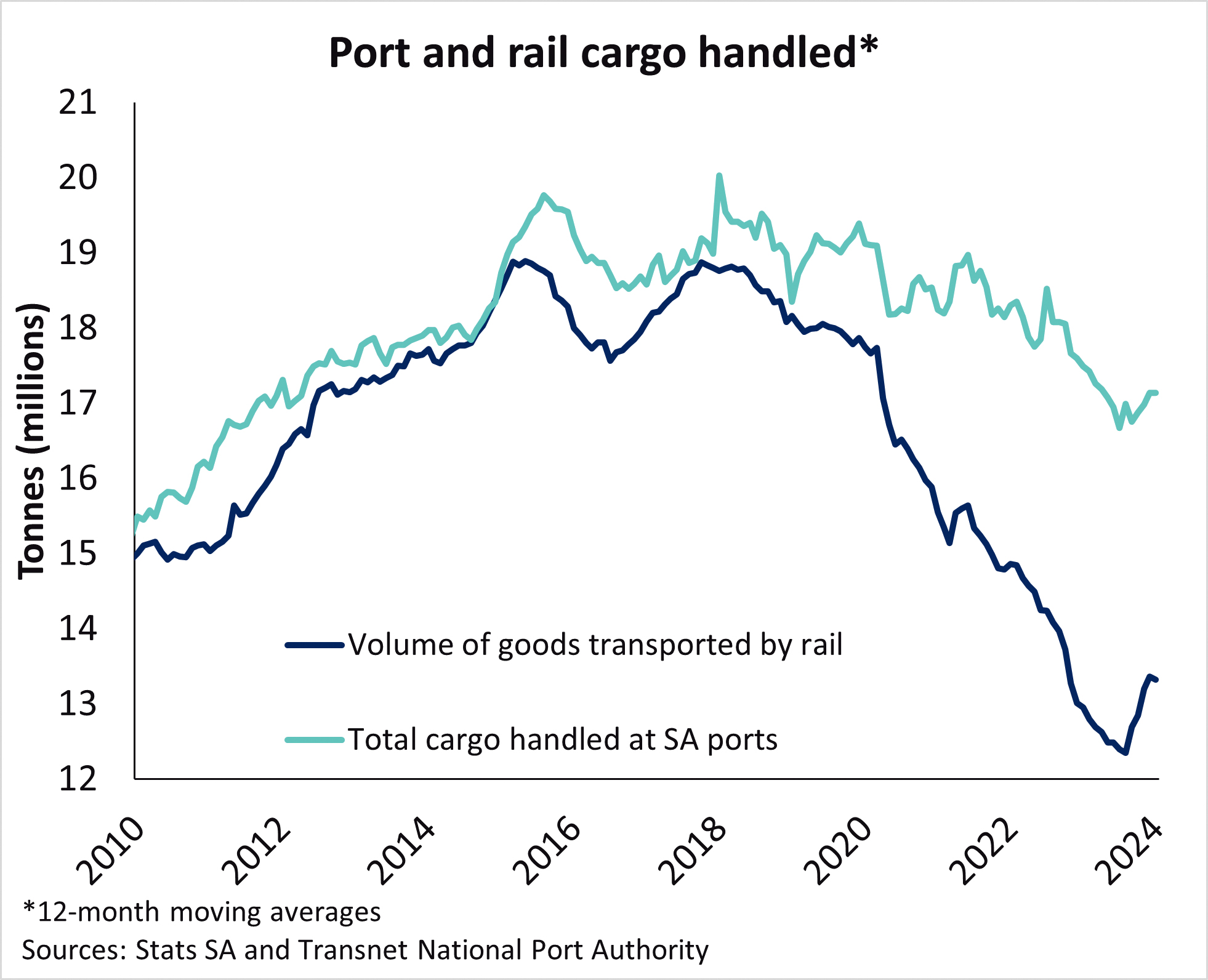
(Source: Monetary Policy Review presentation)
Rail has fallen below its 2010 levels, never mind its pre-pandemic levels, underscoring the scale of the unfolding calamity on the tracks.
The total volume of cargo moved through the ports is at least higher than it was in 2010, but a lot less of it is moving by rail. This vividly throws the surge of often dangerous and damaging trucking on South Africa’s roads into sharp relief.
But the amount moving through the ports is well down from its peaks in 2018.
The chart highlighting the cumulative power cuts is also an eye-opener. In 2020, the blackouts were minimised because the economy imploded under the weight of the hard lockdowns to contain the Covid-19 pandemic. The 2023 line in blue speaks to the blues of the power cuts.
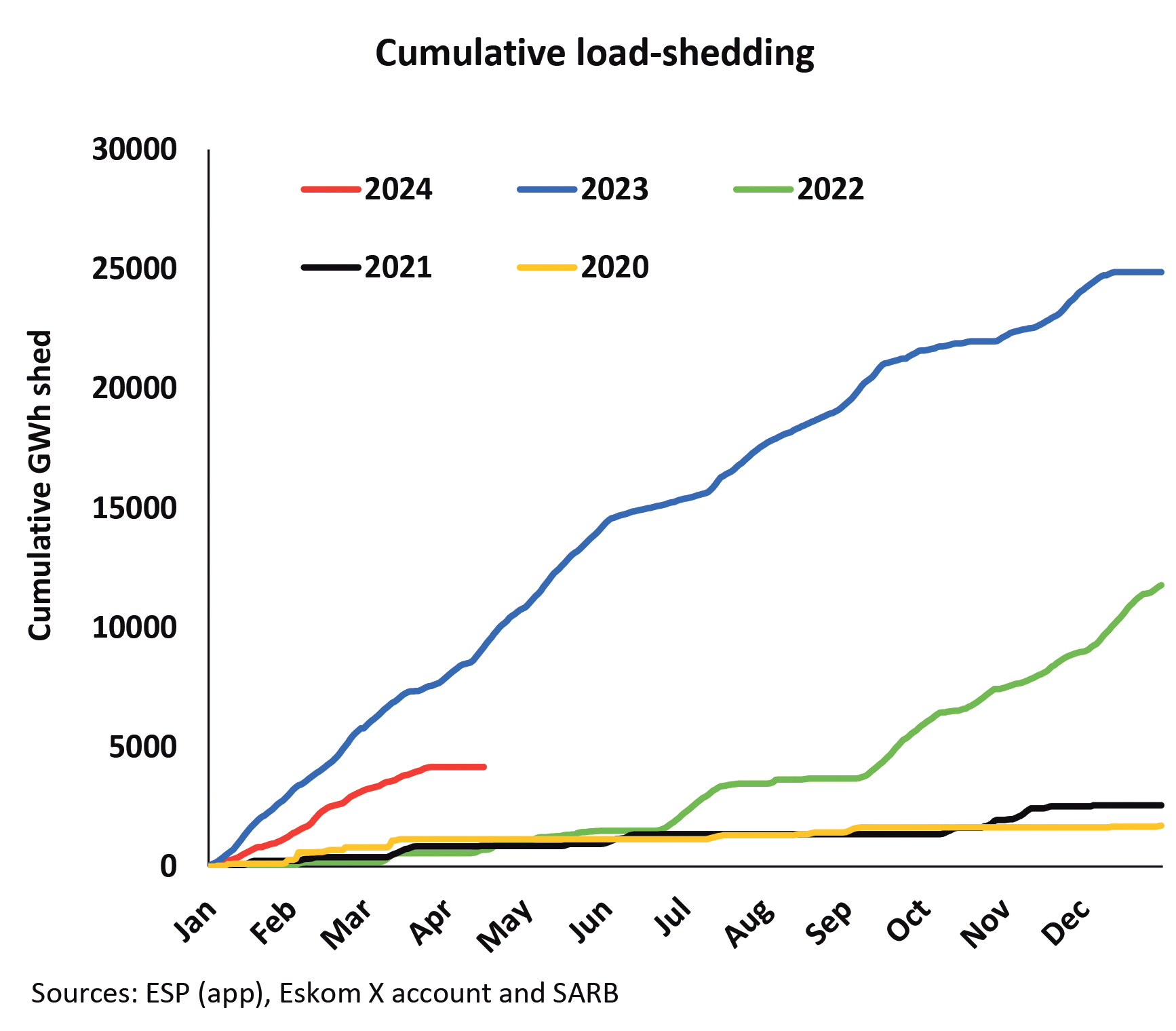
(Source: Monetary Policy Review presentation)
The SA Reserve Bank has estimated that the power shortages shaved 1.8 percentage points off South Africa’s GDP in 2023 when the economy grew by a tepid 0.6%.
At the forum after the presentation of the Monetary Policy Review on 23 April, officials were asked if the SA Reserve Bank has an estimate for the impact of the logistics crisis on GDP.
“What we’ve done is we’ve looked at particularly mining output, because that is the sector most affected by logistics,” Theo Janse van Rensburg, head of macro forecasting at the SA Reserve Bank, said in response.
“If you compare the maximum output before the logistics crisis and you extrapolate that forward [as] if there was not a logistics crisis, when we did that calculation, we got an answer of about 0.4 percentage points off GDP.”
He said that if you looked at other linkages, the total impact would be between 0.5 and 0.75 percentage points sliced off GDP.
The Minerals Council South Africa has estimated that, between 2021 and 2023, South Africa lost out on R90-billion from coal and iron ore exports alone, which equates to 1.4 percentage points of GDP over three years.
The combination of the power and logistics woes goes a long way towards explaining the third chart, which depicts the peaks and troughs of household consumption expenditure and gross fixed capital formation – in effect investment in layman’s terms.
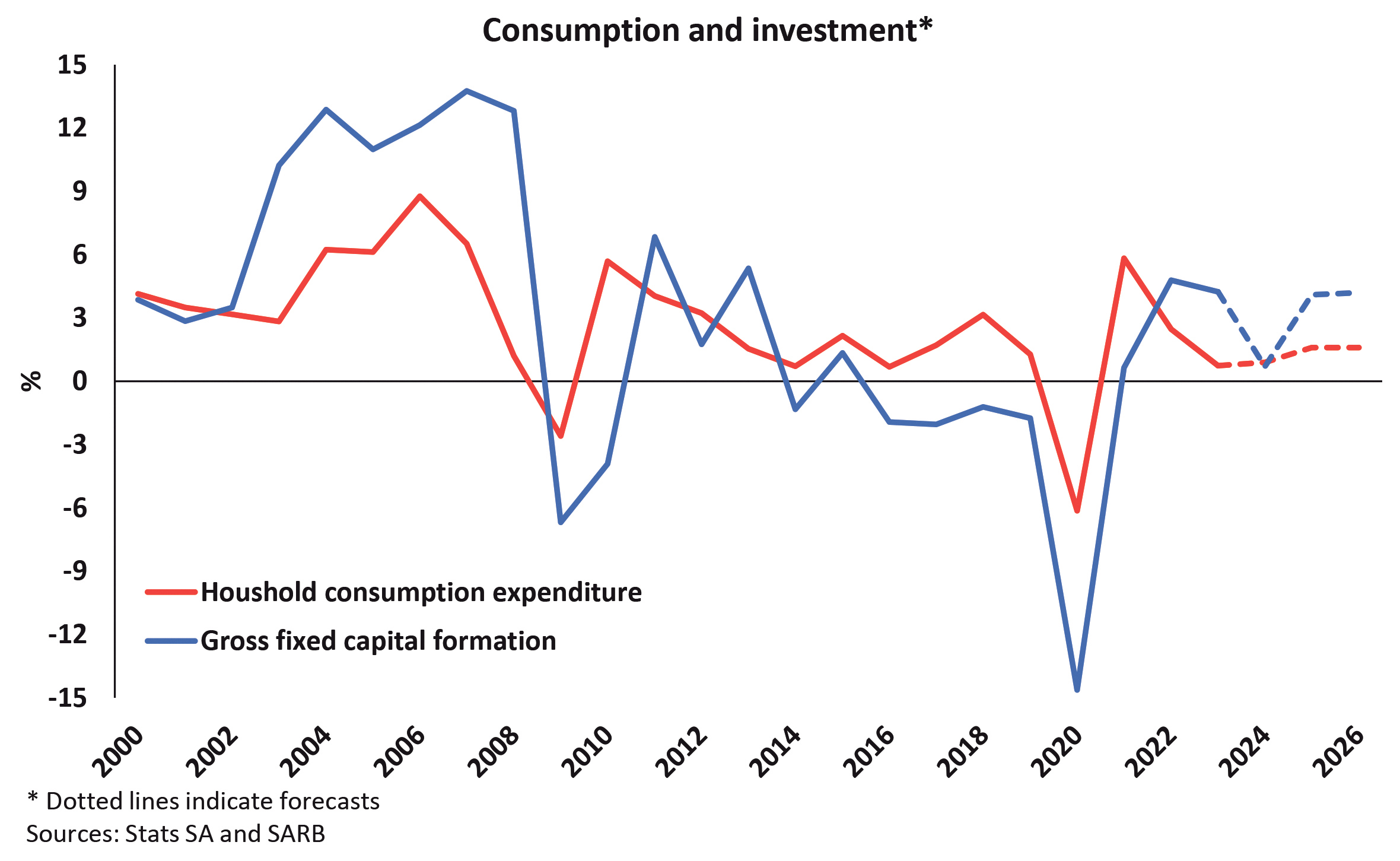
(Source: Monetary Policy Review presentation)
Investment increased by more than 13% in 2007. But after tanking during the global financial crisis that set in around 2008, it never reached its previous growth levels during the Jacob Zuma era of State Capture.
And after the 2020 Covid collapse, it rebounded as lockdowns eased, but has been slowing again.
This illustrates a shattering of confidence in South Africa’s economic outlook and, without significant flows of new investment, growth will remain stagnant and job creation will not be meaningful.
Household consumption was also rising at a relatively robust pace in the mid-2000s and has not grown at such levels since that time.
The three charts taken together paint a woeful picture of South Africa’s economy. The power situation appears to have improved dramatically over the past month, but there is a lack of confidence that it can be sustained as winter and the elections approach. DM
This story first appeared in our weekly Daily Maverick 168 newspaper, which is available countrywide for R29.
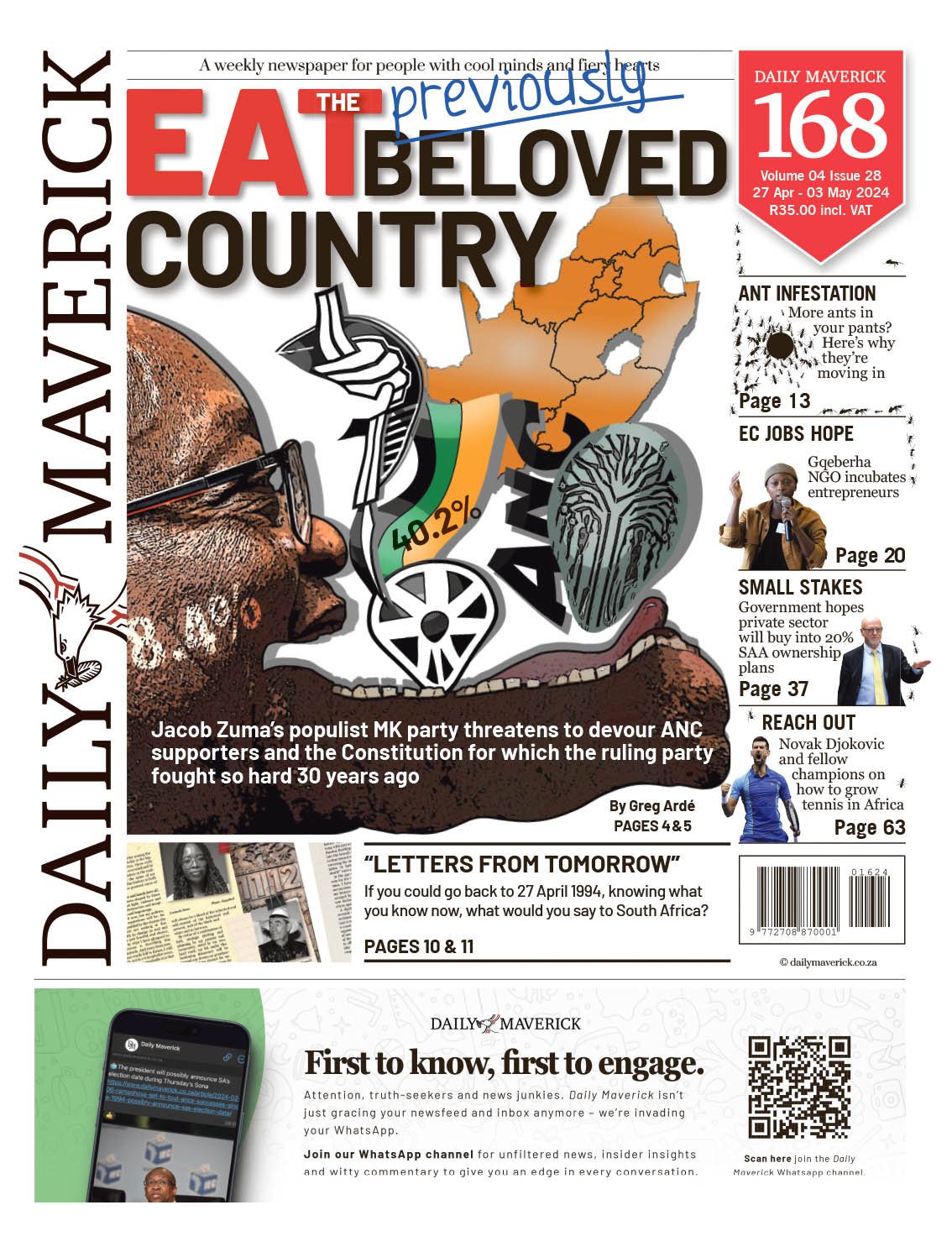
















Please clarify the “Consumption and investment” chart – this shows the year-on-year percentage change (increase or decrease, vs. the previous year) in household consumption and gross fixed capital formation, presumably?
Difficult to trust the 4th estate – hyperbolic sub-titles, selective presentation of statistics etc… as seen in this article.
Zimbabwe and Venezuela have economic meltdowns. A meltdown is very different to things getting much more difficult.
The Y-axis on the rail graph should start at 0 (zero) not 12. This will give a much more accurate picture of the trend. It is really bad that rail tonnages have declined to the extent they have but they have not fallen through the floor as the graph suggests. The consumption and investment graph starts at 2000. Why is this a significant date other than it was the start of the millennium? The structural regime change occurred in 1994. Why was this obvious date not chosen? Until one sees an amended graph the writer is open to the charge that 2000 was chosen so as to align the figures with the sensationalist tone of the article, ie “economic meltdown”…
This kind of distortion is not helpful and obscures where there may be green shoots and solutions found.